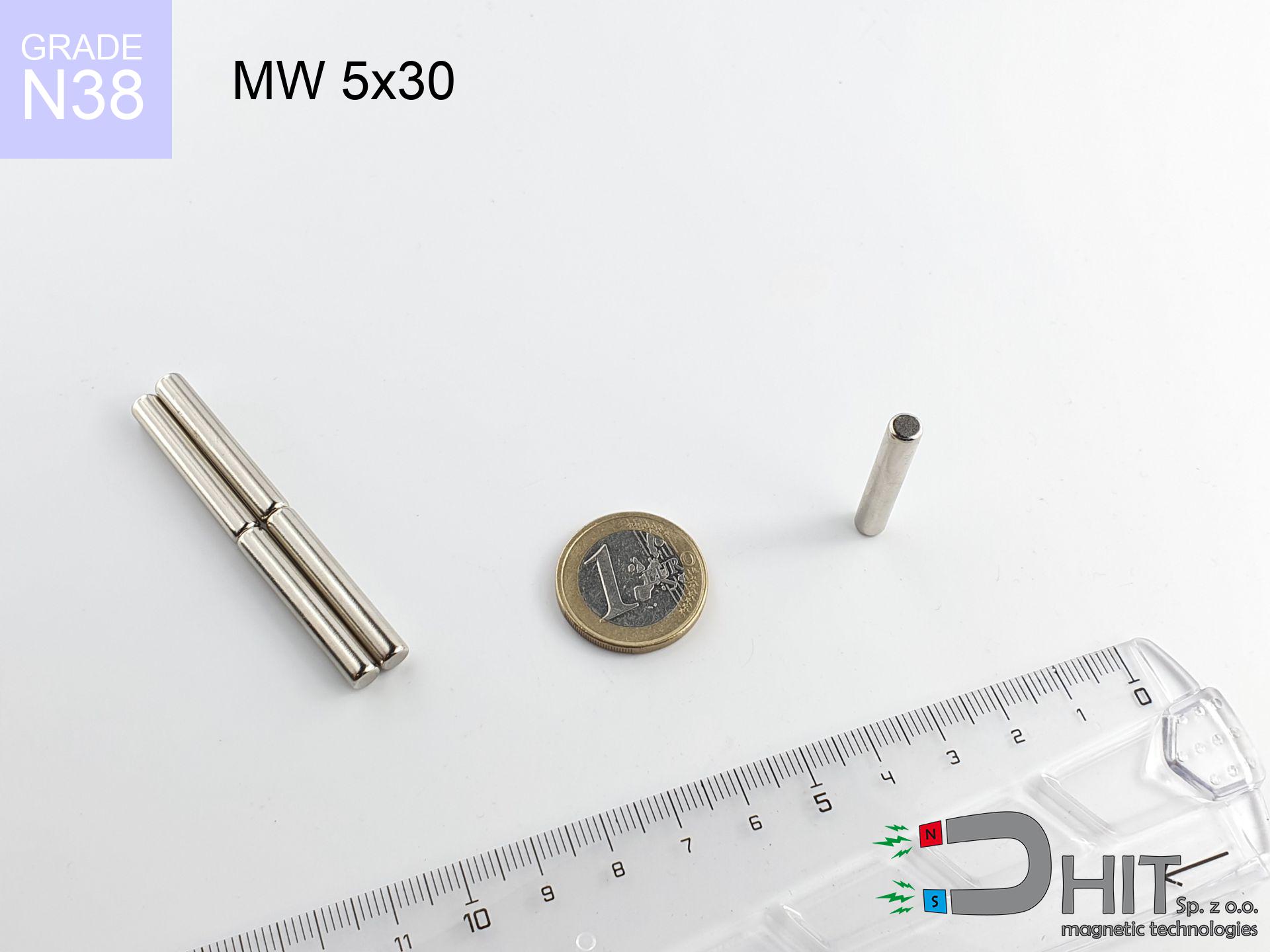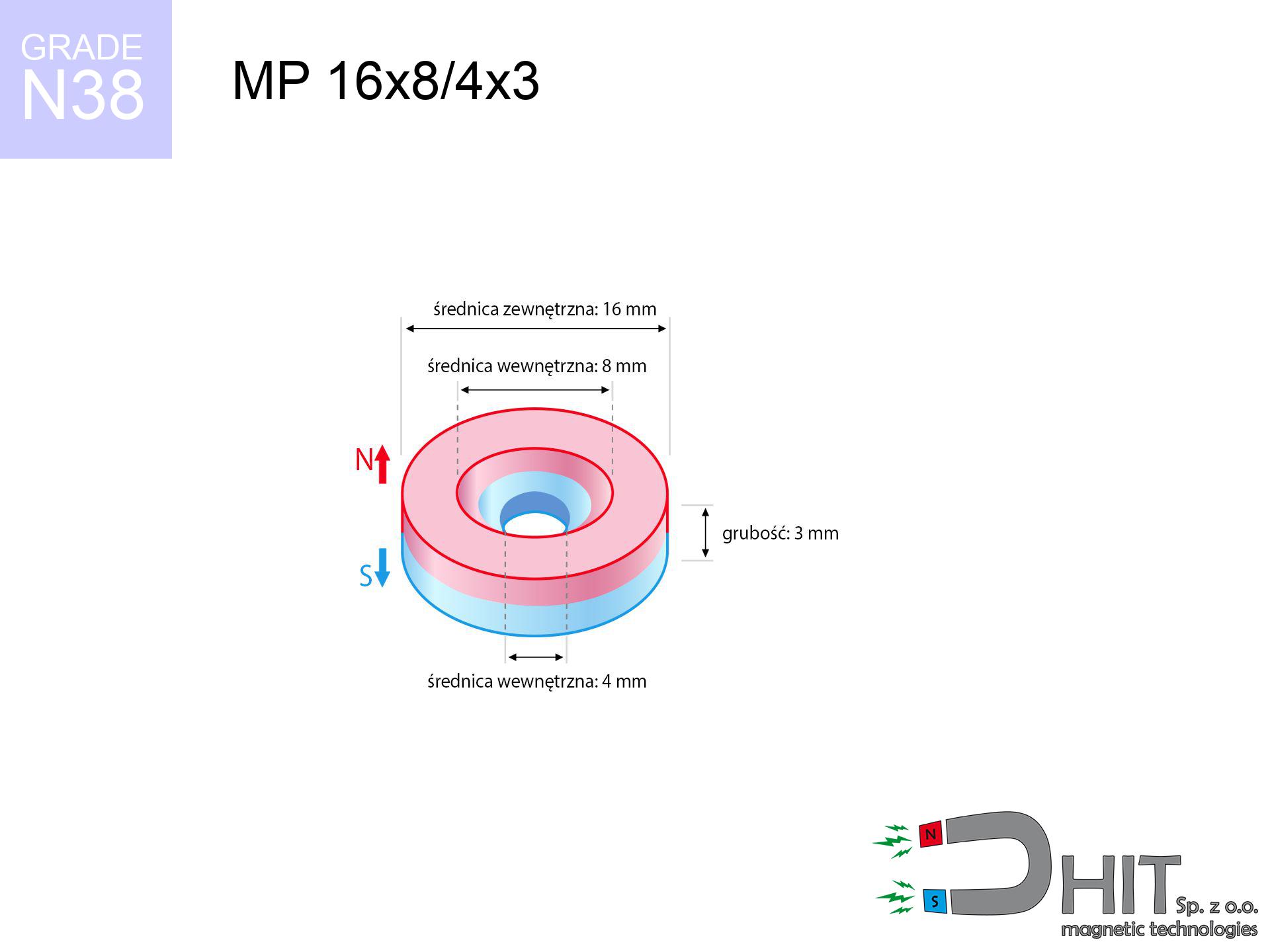MW 12x1 / N38 - neodymium magnet
cylindrical magnet
catalog number 010015
GTIN: 5906301810148
diameter Ø
12
mm [±0,1 mm]
height
1
mm [±0,1 mm]
magnetizing direction
↑ axial
capacity ~
0.66 kg / 6.47 N
magnetic induction ~
101.90 mT / 1,019 Gs
max. temperature
≤ 80
°C
catalog number 010015
GTIN: 5906301810148
diameter Ø
12 mm [±0,1 mm]
height
1 mm [±0,1 mm]
magnetizing direction
↑ axial
capacity ~
0.66 kg / 6.47 N
magnetic induction ~
101.90 mT / 1,019 Gs
max. temperature
≤ 80 °C
0.41 ZŁ gross price (including VAT) / pcs +
0.33 ZŁ net price + 23% VAT / pcs
bulk discounts:
need more quantity?Don't know what to choose?
Give us a call tel: +48 22 499 98 98 or get in touch via form on the contact page. You can check the mass as well as the shape of neodymium magnets in our magnetic calculator magnetic calculator
Orders placed by 2:00 PM will be shipped on the same business day.
Specification: cylindrical magnet 12x1 / N38 ↑ axial
Magnetic properties of the material N38
Physical properties of sintered neodymium magnets Nd2Fe14B
Moreover, although neodymium is a component of the strongest magnets, they are prone to corrosion in humid environments. For this reason, they are coated with a thin layer of gold-nickel to increase their durability. It's worth noting that NdFeB neodymium magnets are about 13% lighter than SmCo magnets and, despite their power, easily break, which requires special caution during their handling. Therefore, any mechanical processing should be done before they are magnetized.
In terms of safety, there are several recommendations regarding the use of these magnets. They should not be used in acidic, basic, organic environments or where solvents are present, and also in water or oil. Additionally, they can distort data on magnetic cards and hard drives, although data deletion using a neodymium magnet is not guaranteed.
In terms of properties in different environments, neodymium magnets are susceptible to corrosion, especially in conditions of high humidity. Therefore, they are often covered with thin coatings, such as nickel, to protect them from environmental factors and extend their lifespan. Temperatures exceeding 130°C can cause a reduction of their magnetic strength, although there are specific types of neodymium magnets that can tolerate temperatures up to 230°C.
As for risks, it is important to avoid using neodymium magnets in acidic environments, basic environments, organic or solvent environments, unless they are properly protected. Additionally, their use is not recommended in wet conditions, oil, or in an environment containing hydrogen, as they may lose their magnetic properties.
List recommended items
Advantages and disadvantages of neodymium magnets NdFeB.
In addition to immense strength, neodymium magnets have the following advantages:
- They do not lose their power (of the magnet). After about 10 years, their strength decreases by only ~1% (theoretically),
- They are highly resistant to demagnetization by external magnetic field,
- Thanks to the shiny finish and nickel, gold, or silver coating, they have an aesthetic appearance,
- They have exceptionally high magnetic induction on the surface of the magnet,
- By using an appropriate combination of materials, they can achieve high thermal resistance, allowing them to operate at temperatures up to 230°C and above...
- The ability for precise shaping or customization to specific needs – neodymium magnets can be produced in many variants of shapes or sizes, which enhances their versatility in applications.
- Wide application in the industry of new technologies – are used in hard drives, electric motors, medical apparatus and other highly developed apparatuses.
Disadvantages of neodymium magnets:
- They are prone to breaking as they are fragile when subjected to a powerful impact. If the magnets are exposed to impacts, we recommend using magnets in a metal holder. The steel housing in the form of a holder protects the magnet from impacts and simultaneously increases its overall strength,
- Magnets lose their strength due to exposure to high temperatures. In most cases, when the temperature exceeds 80°C, these magnets experience permanent loss in strength (although it is worth noting that this is dependent on the shape and size of the magnet). To avoid this problem, we offer special magnets marked with the [AH] symbol, which exhibit high temperature resistance. They can operate even at temperatures as high as 230°C or more,
- Magnets exposed to a humid environment can corrode. Therefore, when using them outdoors, we recommend using waterproof magnets made of rubber, plastic, or other moisture-resistant materials,
- The use of a cover - a magnetic holder is recommended due to the limited production capabilities of creating threads or complex shapes in the magnet
- Health risk associated with microscopic parts of magnets are risky, if swallowed, which is crucial in the context of child safety. Furthermore, miniscule components of these products are able to be problematic in medical diagnosis after entering the body.
Exercise Caution with Neodymium Magnets
Dust and powder from neodymium magnets are flammable.
Do not attempt to drill into neodymium magnets. Mechanical processing is also not recommended. Once crushed into fine powder or dust, this material becomes highly flammable.
Neodymium magnets can attract to each other, pinch the skin, and cause significant injuries.
Neodymium magnets bounce and also touch each other mutually within a distance of several to around 10 cm from each other.
Magnets made of neodymium are particularly delicate, resulting in shattering.
Neodymium magnets are characterized by considerable fragility. Neodymium magnets are made of metal and coated with a shiny nickel surface, but they are not as hard as steel. In the event of a collision between two magnets, there may be a scattering of fragments in different directions. Protecting your eyes is crucial in such a situation.
Avoid bringing neodymium magnets close to a phone or GPS.
Magnetic fields can interfere with compasses and magnetometers used in aviation and maritime navigation, as well as internal compasses of smartphones and GPS devices. There are neodymium magnets in every smartphone, for example, in the microphone and speakers.
The magnet is coated with nickel - be careful if you have an allergy.
Studies clearly indicate a small percentage of people who suffer from metal allergies such as nickel. An allergic reaction often manifests as skin redness and rash. If you have a nickel allergy, you can try wearing gloves or simply avoid direct contact with nickel-plated neodymium magnets.
You should keep neodymium magnets at a safe distance from the wallet, computer, and TV.
Neodymium magnets generate strong magnetic fields that can destroy magnetic media such as floppy disks, video tapes, HDDs, credit cards, magnetic ID cards, cassette tapes, or other devices. They can also destroy videos, televisions, CRT computer monitors. Remember not to place neodymium magnets close to these electronic devices.
Neodymium magnets can become demagnetized at high temperatures.
Whilst Neodymium magnets can lose their magnetic properties at high temperatures, it's important to note that the extent of this effect can vary based on factors such as the magnet's material, shape, and intended application.
Neodymium magnets are the strongest magnets ever created, and their power can surprise you.
On our website, you can find information on how to use neodymium magnets. This will help you avoid injuries and prevent damage to the magnets.
Magnets are not toys, youngest should not play with them.
Neodymium magnets are not toys. You cannot allow them to become toys for children. In such a situation, surgery is necessary to remove them. In the worst case scenario, it can result in death.
People with pacemakers are advised to avoid neodymium magnets.
Neodymium magnets produce strong magnetic fields that can interfere with the operation of a heart pacemaker. Even if the magnetic field does not affect the device, it can damage its components or deactivate the entire device.
To illustrate why neodymium magnets are so dangerous, see the article - How very dangerous are very strong neodymium magnets?.




![magnetic holder external thread 75x34x18 [M10] GZ / N38 magnetic holder external thread 75x34x18 [M10] GZ / N38](https://cdn3.dhit.pl/graphics/products/umgw-75x34x18-m10-gz-xid.jpg)

![magnetic holder internal thread 16x13x5 [M4] GW / N38 magnetic holder internal thread 16x13x5 [M4] GW / N38](https://cdn3.dhit.pl/graphics/products/um-16x13x5-m4-gw-fig.jpg)


